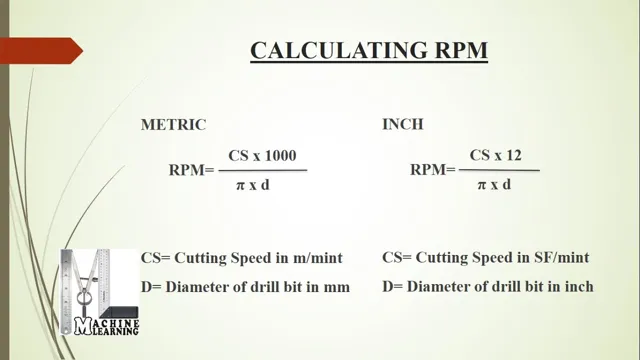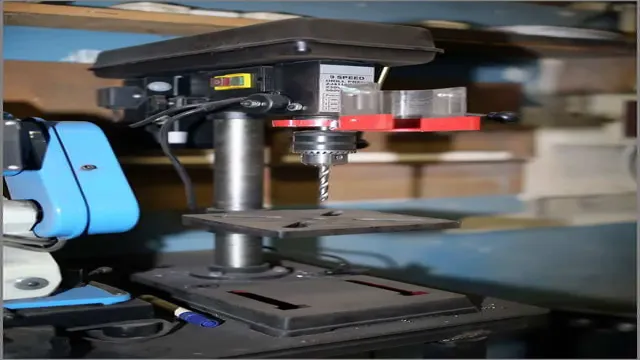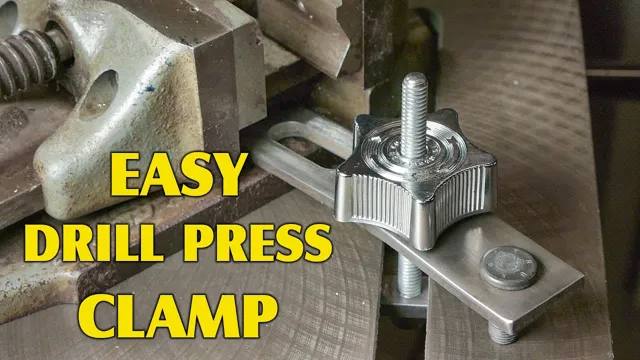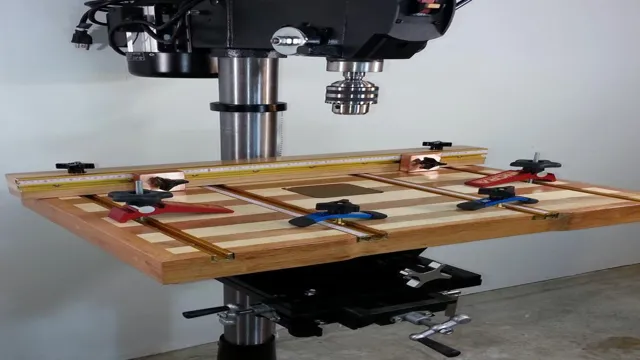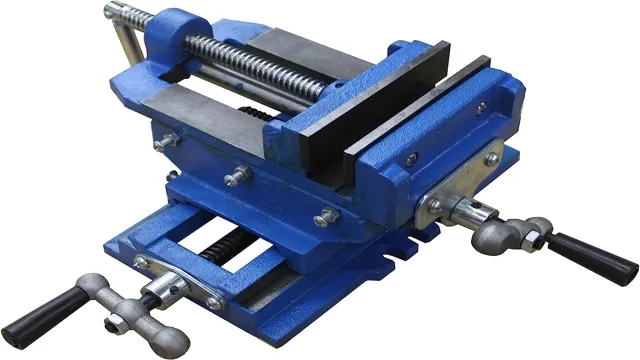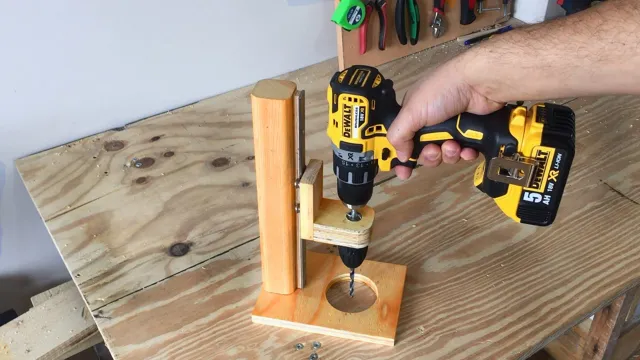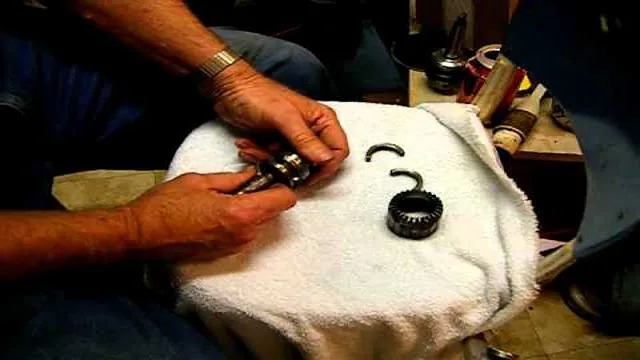How to Control Depth of Drill Bit Drill Press for Precision Drilling
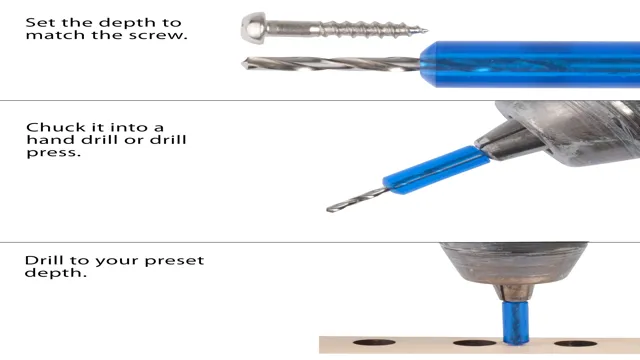
Are you tired of your drill bit not going deep enough or going too deep? Controlling the depth of your drill bit on a drill press can be a tricky task, but it’s essential for achieving precision in your drilling projects.
Whether you’re a beginner or experienced DIY enthusiast, getting the right depth is crucial for creating clean holes with the correct size and depth. In this blog post, we’ll provide tips and tricks on how to control the depth of your drill bit on a drill press effectively.
So, grab your safety glasses and let’s dive in!
Understanding Depth Control on a Drill Press
Controlling the depth of a drill bit on a drill press is essential for precision and accuracy in drilling. To achieve this, you need to first adjust the depth stop on your drill press. The depth stop is a mechanism that controls how far down the drill bit can go.
To adjust it, you need to loosen the lock nut and move the depth stop collar up or down. Once you’ve set the collar to the desired depth, tighten the lock nut to secure it in place. You can then start drilling, making sure to go only as far as the depth stop allows.
Using this method, you can create uniformly deep holes without any variance. Just take note that larger bits might require more pressure to penetrate the material, which could cause the bit to go deeper than anticipated. Nonetheless, controlling the depth of your drill bit will help you achieve clean and accurate results on every project you undertake.
The Importance of Depth Control
Depth Control As an essential feature of a drill press, depth control determines how deep the drill bit penetrates the material being worked on. This feature is relevant in many applications that require precision, accuracy, and repeatability, such as woodworking, metalworking, and drilling holes for bolts and screws. By adjusting the quill stop or depth gauge, you can limit the depth of the drill bit and ensure every hole drilled is of the same depth.
A consistent depth also mitigates the risk of breaking the drill bit or damaging the material. Moreover, the depth control feature enables you to drill deeper or shallower holes, depending on the project’s requirements, without worrying about overdrilling or underdrilling. In conclusion, understanding how to control the depth on a drill press is a must-have skill for any DIYer or professional who wants to produce high-quality and accurate results.
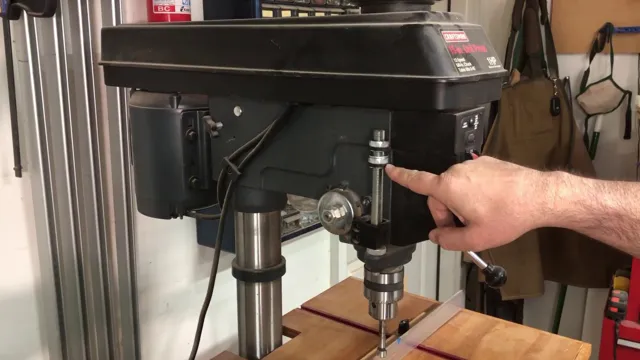
Different Types of Depth Control Mechanisms
If you’re looking to improve your drilling precision, then you need to understand depth control mechanisms. These mechanisms allow you to control the depth of your drill bit as you work, ensuring that you don’t drill too deep or too shallow. There are several types of depth control mechanisms out there, including manual, automatic, and programmable.
Manual depth control mechanisms require you to adjust the depth of the drill bit manually, using a depth gauge and locking mechanism. Automatic mechanisms work in a similar way but use a motor to adjust the depth of the drill bit. Programmable mechanisms take things a step further, allowing you to program the depth at which the bit will stop automatically.
Each type of mechanism has its own set of advantages and disadvantages, so you’ll need to choose the one that best suits your needs. Whether you’re a professional or a DIY enthusiast, having a good understanding of depth control can help you achieve better and more consistent results.
Setting Depth on a Drill Press
When it comes to using a drill press, controlling the depth of the drill bit is essential to achieving precise and accurate results. Fortunately, setting the depth on a drill press is relatively straightforward. Firstly, you need to determine the depth of the hole you want to drill.
Most drill presses have depth stops that allow you to set the drilling depth by adjusting the distance between the depth stop and the drill bit. This can be done by tightening or loosening the depth stop collar located on the drill press column. Once you’ve set the depth, you can then adjust the drilling speed and begin the drilling process.
Remember to always wear safety gear, like goggles and gloves, and keep the chuck and work surface clean to prevent damage to the drill bit or injury to yourself. With a little practice, you’ll be able to master drill press depth settings and tackle all sorts of drilling projects with ease!
Steps to Take Before Setting Depth
One important step to take before setting depth on a drill press is to ensure that you have the proper drill bit for the job at hand. Using the wrong size or type of bit can lead to a poor outcome or even damage the material you are drilling into. Once you have the correct bit, it is important to position it in the chuck securely and tighten it properly.
You may also want to consider clamping down your workpiece to ensure that it does not move or shift during the drilling process. Finally, it is important to set the depth stop on the drill press to the appropriate depth to ensure consistent and accurate drilling. By taking these steps, you can ensure that your drilling project will be successful and you can avoid any potential mishaps.
Using Depth Stop or Depth Ring
Setting depth on a drill press can be a tricky task, especially if you need to make multiple holes with the same depth. But there’s a handy tool that can make it easier: the depth stop or depth ring. This feature allows you to set the depth of your drill bit, so it won’t go any deeper than you want it to.
All you have to do is adjust the collar on the spindle and lock it in place at the correct position. Then, when you lower the quill and start drilling, the depth stop will prevent the bit from going beyond the predetermined depth. Using a depth stop or depth ring is not only convenient, but it can also ensure the accuracy and consistency of your holes.
You don’t have to worry about eyeballing the depth or measuring each hole manually. Plus, you can save time by drilling multiple holes with the same depth without having to readjust the spindle every time. To use the depth stop, first, you need to know the exact depth you want to drill.
Then, you adjust the collar on the spindle to that depth, usually by loosening a set screw and moving the collar up or down. Some drill presses have a depth scale on the spindle, while others require you to measure the distance between the collar and the workpiece. Once the collar is in place, tighten the set screw, and you’re ready to start drilling.
In conclusion, whether you’re a professional woodworker or a DIY enthusiast, using a depth stop or depth ring on your drill press can make your work more accurate and efficient. It takes a bit of practice to get used to it, but once you do, you’ll wonder how you ever managed without it. So, next time you need to drill multiple holes with the same depth, give the depth stop a try and see the difference it makes.
Adjusting Depth on a Digital Depth Gauge
Adjusting depth on a digital depth gauge is a quick and easy task, whether you’re working with a drill press or any other power tool that requires precision and accuracy. When it comes to setting the depth on a drill press, you first need to determine the specific depth you want the drill bit to penetrate into the material.
Once you have this measurement, you can easily adjust the depth gauge by loosening the locking nut and sliding the gauge up or down until it lines up with the desired depth.
Tighten the nut to lock the gauge in place, and your drill press is now set to drill at the perfect depth. The key to success with this process is taking your time and being intentional about your adjustments. Whether you’re a seasoned professional or a novice DIY enthusiast, proper use of a digital depth gauge will ensure that your project turns out perfect every time.
Tips for Achieving the Best Depth Control
When it comes to achieving the best depth control with your drill bit and drill press, there are a few tips you can follow to ensure smooth and accurate drilling. Firstly, start by adjusting the depth stop collar to the desired depth, making sure it is securely tightened. It’s important to note that different materials require different drilling speeds and pressure, so make sure to adjust accordingly.
Remember to also start your drill at a slow speed to help prevent any slip ups. Another important tip is to use a sharp drill bit, as a dull bit can cause irregular drilling depth. Finally, make sure to always wear protective gear such as safety glasses and gloves to avoid any potential injuries.
By following these tips, you can achieve the best depth control and produce high-quality results in your drilling projects.
Choosing the Correct Bit for the Job
When it comes to choosing the right drill bit for the job, there are a few things to consider. First off, you need to know what type of material you will be drilling through. Different materials require different types of bits.
For example, masonry bits are designed for drilling through concrete or brick, while metal bits are better suited for drilling through metal. Additionally, you need to consider the size of the hole you need to make. Different bits come in different diameters, so you want to make sure you select a bit that will create a hole that is the perfect size.
Finally, achieving the best depth control is crucial to ensure the integrity of the material you are drilling into. You want to make sure you have a steady hand and apply the right amount of pressure to achieve the desired depth. Use caution and take your time, and you should have no problem achieving a clean, precise hole.
Ensuring Proper Lubrication
Proper lubrication is essential to ensure that your equipment runs smoothly and efficiently. When it comes to achieving the best depth control, it is crucial to use the right lubricant and apply it correctly. One of the most effective ways to ensure proper lubrication is to clean the equipment thoroughly before applying the lubricant.
This will remove any dirt or debris that could interfere with the lubricant’s performance. It is also important to use the right type of lubricant as some may be too thick or thin for your specific equipment. Applying the correct amount of lubricant is equally important.
Too much can cause the equipment to overheat and too little can result in excess wear on the parts. The key is to find the right balance. By taking the time to ensure proper lubrication, you can achieve the best depth control and extend the life of your equipment.
Conclusion
When it comes to drilling, it’s all about precision and control. And luckily, controlling the depth of your drill bit on a drill press is easier than you might think. With a few simple adjustments and a steady hand, you can ensure that your holes are the perfect depth every time.
Remember to adjust the depth stop collar, use a sacrificial board, and monitor your progress as you drill. With these tips in mind, you’ll be a master of depth control in no time. So go ahead, drill with confidence, and always aim for the perfect level of depth – because when it comes to drilling, it’s all about going deep… but not too deep.
FAQs
What is the depth of a drill bit?
The depth of a drill bit refers to how far the drill bit can penetrate into a material.
How can I control the depth of a drill bit?
You can control the depth of a drill bit by adjusting the depth stop on your drill press. This will allow you to drill to a specific depth without going too deep.
Why is it important to control the depth of a drill bit?
Controlling the depth of a drill bit is important because it ensures that you do not drill too deep and damage the material you are working with. It also helps to ensure that you achieve the desired depth for your project.
What are some common types of depth stops for drill presses?
Common types of depth stops for drill presses include threaded depth stops, spring-loaded depth stops, and clamping depth stops.
Can I use a drill bit without a depth stop?
Yes, you can use a drill bit without a depth stop, but it will be more difficult to control the depth of your drilling. It is recommended to use a depth stop for more precise and accurate drilling.
How do I adjust the depth stop on my drill press?
To adjust the depth stop on your drill press, loosen the locking screw and move the stop to the desired position. Tighten the locking screw to secure the stop in place.
What should I do if my drill bit goes too deep?
If your drill bit goes too deep, you may need to patch the hole or start over with a new piece of material. It is important to always double-check your depth settings before drilling to avoid this issue.

